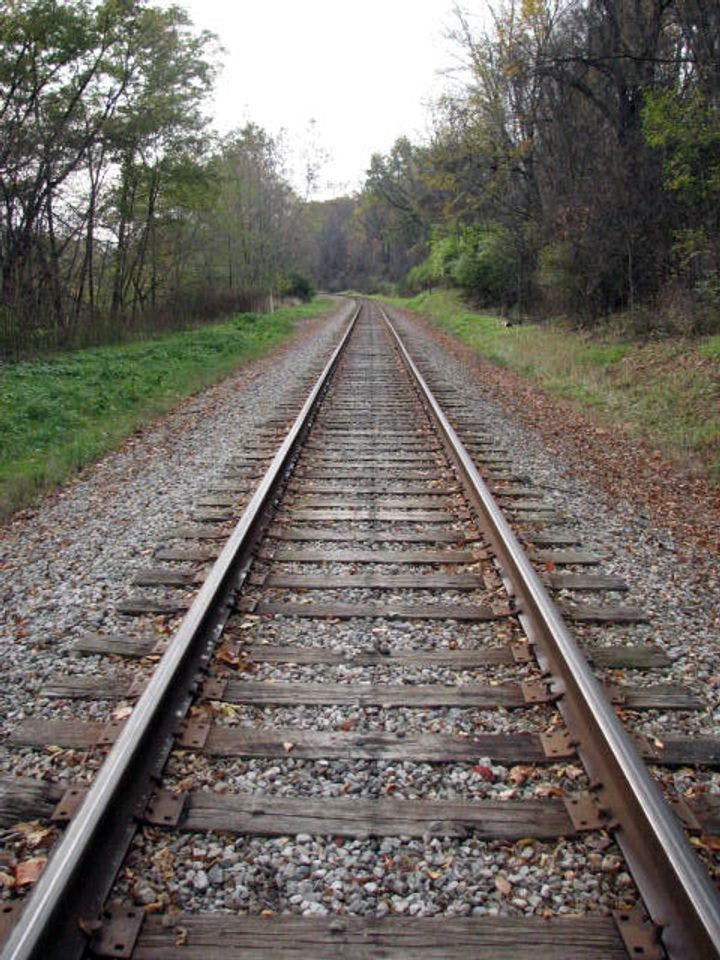Spring 2008
Back on Track?
– Mark Reutter
Mark Reutter says books such as John Stilgoe's “Train Time” are “of interest because they reveal a mindset that is part of the problem that the author is trying to correct.”
In 1983, John Stilgoe published Metropolitan Corridor, an important book with fresh insights on the spatial and social impact of railroads on 19th-century America. Train Time is billed as a sequel to that work. According to Stilgoe, railroads are on the cusp of ending the tyranny of highways in the United States and will reclaim their birthright as the premier mover of people, freight, and mail.
“When the railroad returns, not if,” Stilgoe declares, America will be transformed. “Return [of train travel] will alter everyday life more dramatically than the arrival of personal computers, Internet connections, or cell phones.” His certainty about a rail renaissance is surprising. Passenger trains are few and far between today; in 2005, Americans traveled 900 miles by private vehicle for every mile by intercity rail. The disconnect between Stilgoe’s vision and reality is just evidence of “the final, sickly sweet blossoming of the automobile,” he argues, which only “masks the desperation of real estate developers terrified that people will not buy the last of the structures built according to automobile thinking.”
Some books are of interest because they reveal a mindset that is part of the problem that the author is trying to correct. So far, train advocates have been unsuccessful in wresting America’s heart from SUVs and three-car garages. Despite $3-a-gallon gasoline and worry about global warming, debate over transportation priorities hasn't figured in this year’s presidential campaigns. Convincing taxpayers that trains could save them money and improve the environment is a subtle educational task.
Stilgoe, a historian of landscape at Harvard, swings a sledgehammer against anyone who does not share his opinions. And some of his opinions are idiosyncratic. In 1962, he writes, the wise men of the Kennedy administration recognized the “futility” of building more highways, but they were thwarted by Lyndon B. Johnson and his Great Society program. (For the record, today’s Northeast Corridor got its start with the 1965 High Speed Ground Transportation Act, signed by Johnson, who also spurred the development of Washington, D.C.’s Metro subway.) More often, the arguments are simplistic. Amtrak, Stilgoe declares, was organized as an “elegant means of keeping railroad innovation under the control of a Congress controlled by road and airline industries—and by the military.”
After exhausting his prophecies and conspiracy theories, Stilgoe addresses various aspects of train service with more success. There are interesting chapters about the poor state of mail delivery after the Post Office Department abandoned railway transportation in the 1960s and the revival of freight traffic in the past 20 years with the growth of global trade. But the book sidesteps the crucial issue of how we get from here to there—from Amtrak’s threadbare service (outside the BostonWashington Northeast Corridor) and freight railroads’ clogged infrastructure to 200-mile-per-hour passenger trains and just-in-time product shipments. Or, more realistically, how we can build strategic rail links, ranging from 50 to 200 miles, that complement highways and relieve the worst of traffic congestion and pollution.
Stilgoe forsakes footnotes and offers instead a laundry list of sources at the end of each chapter. Inexplicably, he fails to cite the work of a number of recognized experts, including Maury Klein, Albro Martin, Joseph Vranich, and a forebear, John W. Barriger III. Back in 1956, Barriger published Super-Railroads for a Dynamic American Economy, in which he asked why “super-highways and super-markets and super-everything-else [are] part of modern America’s burgeoning economic life, while there are no super-railroads.” That question has yet to be adequately answered.
* * *
Mark Reutter, a Wilson Center fellow during 1994-1995, is the former editor of Railroad History.
Reviewed: "Train Time: Railroads and the Imminent Reshaping of the United States Landscape" by John R. Stilgoe, University of Virginia Press, 2007.
Photo courtesy of Flickr/Joanne
